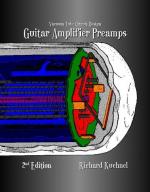|
This section contains 708 words (approx. 3 pages at 300 words per page) |

|
The invention of the vacuum tube (or valve, as it is known in Britain) led to the electronic revolution. Its history begins in 1884.
Thomas Edison, while working on his incandescent light bulb, inserted a metal plate between glowing filaments. He observed that electricity would flow from the positive side of the filament to the plate, but not from the negative. He didn't understand why this was so and treated this Edison Effect as a curiosity. Unwittingly, he had created the first diode.
Later, John Ambrose Fleming of England, one of Edison's former assistants, became involved in designing a radio transmitter for Guglielmo Marconi. In 1904 Fleming realized that the diode had the ability to convert alternating current (AC) into direct current (DC), and incorporated it into his very efficient radio wave detector. Fleming called his device the thermionic valve because it used heat to control the flow...
|
This section contains 708 words (approx. 3 pages at 300 words per page) |

|


